Quick links to other Cyprus pages and/or sections Here
Introduction
Cyprus is an island nation in the eastern Mediterranean, positioned at the crossroads of Europe, Asia, and Africa. Its strategic location has shaped a history marked by successive influences, from ancient Greek and Roman presence to Byzantine, Ottoman, and British rule, each leaving enduring cultural and architectural imprints. Independent since 1960, the Republic of Cyprus remains divided following conflict in the 1970s, with a UN-monitored buffer zone (the “Green Line”) separating the Greek Cypriot south from the Turkish Cypriot north. The island retains two British Sovereign Base Areas in Cyprus, Akrotiri and Dhekelia, which serve as military bases.

Above: One of the many beaches in Limassol
Cyprus covers an area of about 3,570 square miles (9,250 square km), making it the third-largest island in the Mediterranean. Its population is roughly 1.2 million, with the majority living in the southern part controlled by the Republic of Cyprus, and a smaller population in the north under Turkish Cypriot administration. The island’s landscape blends rugged mountains, fertile plains, and a long coastline with sunlit beaches, while its climate combines Mediterranean warmth with alpine coolness at higher altitudes. Its people, primarily Greek and Turkish Cypriots, share traditions rooted in hospitality, family life, and a rich culinary heritage, though they maintain distinct cultural and linguistic identities. Cyprus today is a modern state balancing ancient legacies with its role as a member of the European Union and a bridge between continents.

Above: Traditional style building in Larnaca
The Turkish invasion of Cyprus took place on 20 July 1974, following a coup d'état by Greek Cypriot nationalists who sought union with Greece. A second phase of the invasion occurred in August 1974, leading to the division of the island that remains today. Turkey is the only nation in the world that recognises the Turkish Republic of Northern Cyprus as a country in its own right. When Cyprus joined the European Union (EU) in 2004, the whole island was included in the agreement, although EU law is currently suspended in the north. The British Sovereign Base Areas of Akrotiri and Dhekelia are a British Overseas Territory, not part of Cypriot administration, and not part of the EU. However, a special agreement (called Protocol 3) makes sure that people living there still get the same EU benefits as those in the rest of Cyprus.

Above: The Troodos Mountains is the largest mountain range in Cyprus and is located in roughly the centre of the island.
The photographs on this webpage were taken during a 10-night visit in September 2025. For the purposes of seeing some the island's main tourist highlights, practicality, and consideration of the size of the island, the resort city of Limassol was chosen as a base for the stay, with four full-day excursions being taken (booked via two popular trip/guide websites) and plenty of time exploring Limassol on foot from the hotel, which was nearer to the city centre than some of the luxury hotels which lie several miles further west along the coastline.
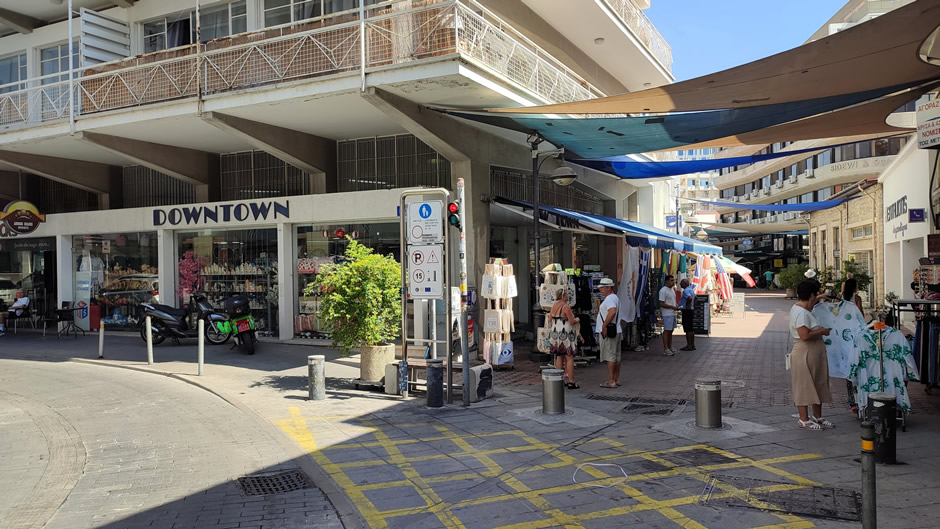
Above: Souvenir shops in Limassol
Limassol sits on the Island’s southern coast and is fairly central, whereas the popular resorts of Paphos and Ayia Napa are located on the south-western and south-eastern shores of the island respectively. The British visitor may find the island an ideal destination due to the fact that English is widely spoken, especially in the tourist areas, Cyprus drives on the left, and also uses the same electrical plug type as the UK. Many international visitors to Cyprus understandably come here to relax and do very little in a fairly guaranteed hot climate, whilst others are attracted to the many different sights the island has to offer, including many excursions on boat, such as to the Blue Lagoon (not seen on this visit). The sections on this webpage that follow cover the sites seen on this trip and are organised chronologically rather than representing a list based on popularity.

Above: A small sample of the many modern buildings that can be found along the coastline in the city of Limassol, which stretches for about 6½ miles (or 10 to 11km).
[Page 1] Trip 1: Nicosia and Larnaca
[Page 2] Trip 2:
Kourion,
Aphrodite Rock,
Paphos,
The Tombs of the Kings, and
Nea Paphos
[Page 3] Trip 3,
Troodos Mountains:
Laneia,
Troodos Square,
Holy Monastery of the Virgin
Mary of Kykkos,
The Tomb of Archbishop Makarios III,
Lambouri Winery,
and
Omodos
[Page 4] Trip 4,
Northern Cyprus:
Varosha Ghost Town,
Salamis Ancient Ruins, and
Famagusta
[Page 5] Local to Hotel: Limassol, including Agia Napa Cathedral and Limassol Castle, amongst many other sites in the city.
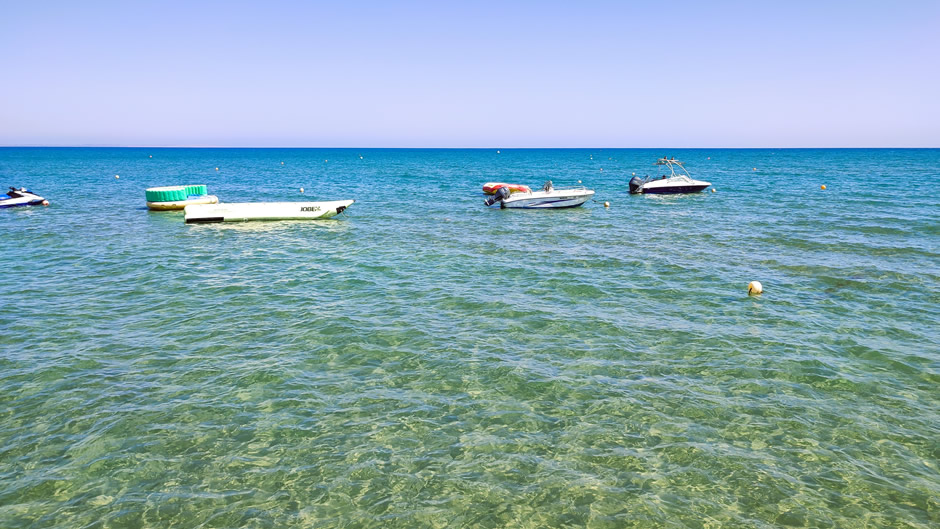
Nicosia, the capital of Cyprus, is a city steeped in history and divided by both culture and politics. Located in the central part of the island, it is the last divided capital in Europe, split between the internationally recognized Greek Cypriot south and the Turkish-controlled north. It is a city of striking contrasts, where ancient walls and Ottoman architecture meet modern cafés and cultural venues. Within its Venetian walls lies a maze of narrow streets, museums, and churches, while the outer city buzzes with contemporary life.

Above: Ledra Street, Nicosia

Above: One of the border checkpoints that separate the two sides, a striking reminder of the island’s turbulent past. It is located on the main drag, Ledra Street, a vibrant shopping and cultural corridor, filled with boutiques, cafés, and street art.
Still largely intact, with most of their original structure preserved, the city walls of Nicosia (below) are a striking reminder of the island’s Venetian past, encircling the old town in a near-perfect circle. Built in the 16th century by the Venetians to defend against Ottoman invasion, the walls feature eleven bastions named after noble families and three original gates – Paphos, Famagusta, and Kyrenia. Today, they define the historic core of Nicosia, with parts of the moat repurposed into parks and cultural spaces, blending centuries-old fortifications with modern urban life.

Among the city's landmarks, the Shacolas Tower Museum and Observatory offers a panoramic view of Nicosia, giving a sense of the city’s size and its division. From here, it was possible to get a clear view of a massive flag of the Turkish Republic of Northern Cyprus, which has been controversially painted on the side of the southern face of the Beşparmak (Five Finger) mountain range, near Kaynakköy. The flag overlooks Nicosia and serves as a prominent symbol of Turkish Cypriot identity and a reminder of the island's division. Constructed in the 1980s, it mirrors the Turkish flag and features the Atatürk quote "Ne mutlu Türküm diyene" (How happy is one who says I am a Turk). It is illuminated at night, making it a highly visible landmark.
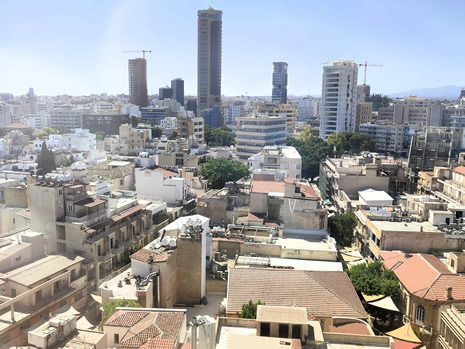 |
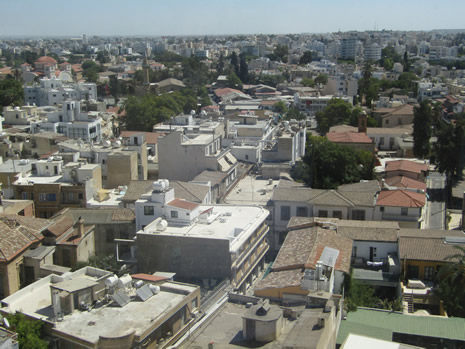 |
|
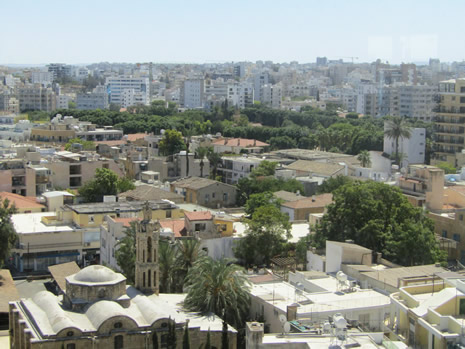 |
 |
|
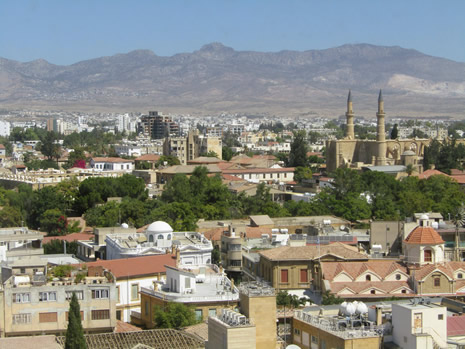 |
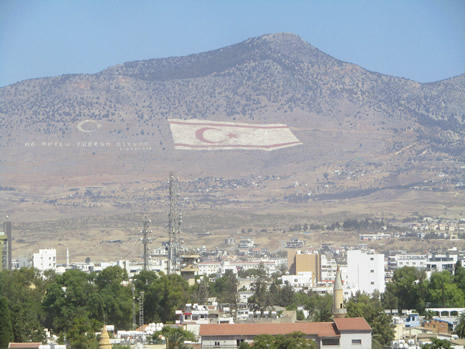 |
Above: Views from the Shacolas Tower Museum
The Leventis Municipal Museum in Nicosia (shown below) is the city’s main historical museum, showcasing its rich past from ancient times to the present. Located on Hippocratous Street in the old town, the museum is housed in a restored neoclassical building.
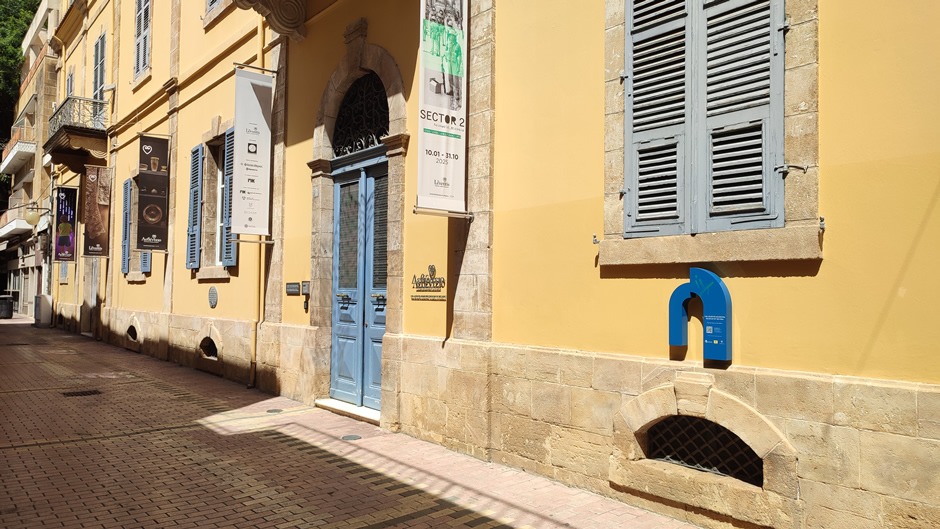
The museum features over 10,000 artifacts including maps, costumes, pottery, and photographs. It traces Nicosia’s evolution through the Chalcolithic, Byzantine, Ottoman, and modern eras, offering visitors a vivid journey through the capital’s cultural and social development:
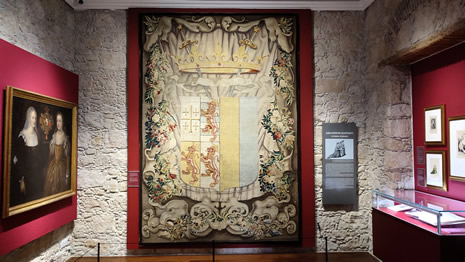 |
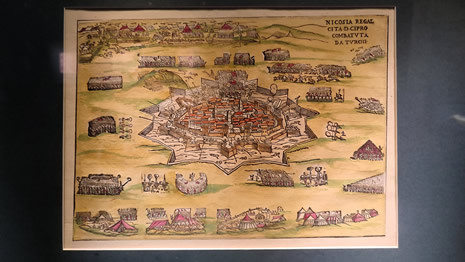 |
|
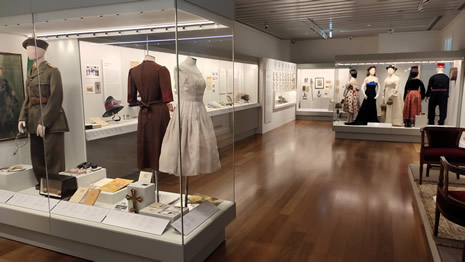 |
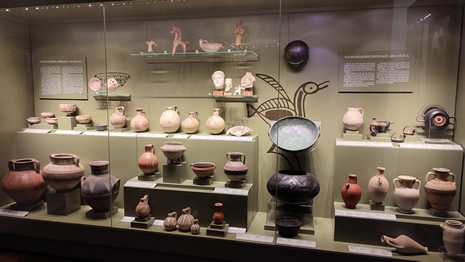 |
|
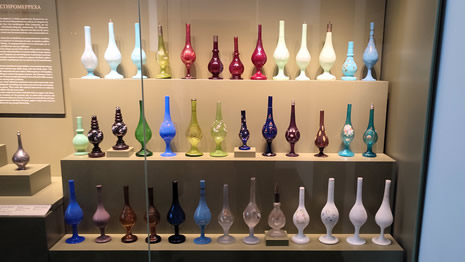 |
 |
The old Nicosia Town Hall (or City Hall, and shown below left) is located on Eleftheria Square, or “Liberty Square” (below right), at the southern end of Ledra Street. The old Nicosia Town Hall served as the city’s municipal heart for much of the 20th century. With its neoclassical façade and understated charm, it reflected a more modest era of civic life. While it no longer houses the main municipal offices, its legacy endures (a new Nicosia Town Hall was completed in early 2024 and features a contemporary architectural style set within the walled city).
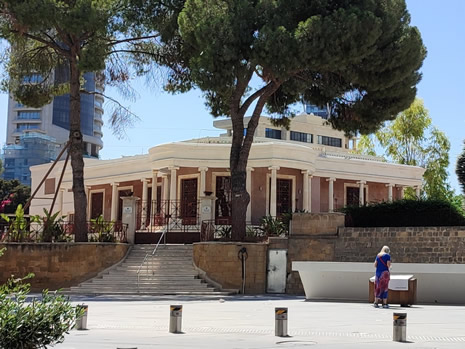 |
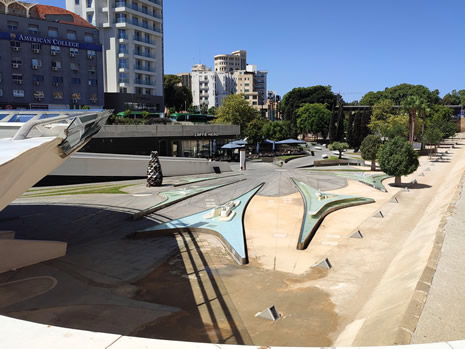 |
The Archbishop's Palace in Nicosia (below) is a grand, neo-Byzantine building that serves as the official residence of the Archbishop of the Church of Cyprus. Built between 1956 and 1960, it stands next to the old palace and houses the Byzantine Museum, National Struggle Museum, and Library of the Archbishopric, making it both a religious and cultural landmark in the heart of the capital.

Walking through the old town, it is possible to see the blend of cultures, where both Greek and Turkish influences are evident in architecture and daily life. Whether it’s the vibrant street life or the remnants of a conflicted past, Nicosia offers a unique experience that mixes the old with the new, highlighting both the beauty and complexity of the island.
Larnaca (also known as Larnaka) is a vibrant coastal city located on the southeastern edge of Cyprus. Serving as the administrative centre of the Larnaca District, it is the third largest city in the country, after Nicosia and Limassol. Larnaca is one of the island’s oldest continuously inhabited cities; its roots trace back to ancient Kition (named so in ancient Greek, or “Citium” in Latin), a Mycenaean settlement from the 13th century BC that later flourished under Phoenician rule as a major port and copper trade hub. The present-day port city of Larnaca is built on top of the ancient site of Kition.

The main promenade, Finikoudes Beach, the wide range of modern apartments and hotels, and local infrastructure and amenities, make Larnaca a popular destination for visitors to the island. Convenient to the city, its namesake Larnaca International Airport (LCA) is located nearby. LCA is Cyprus' primary and largest commercial airport, surpassing the less centrally located Paphos International Airport in the southwest of the island. Main tourist sites in Larnaca include the Church of Saint Lazarus, Larnaca Fortress, and Hala Sultan Tekke & Salt Lake.

At the heart of Larnaca lies the Church of Saint Lazarus (below), a stunning 9th-century Byzantine structure built over the reputed tomb of Lazarus, the biblical figure resurrected by Jesus. The church is a masterpiece of stone architecture, featuring intricate carvings and a gilded iconostasis. It remains a vital pilgrimage site and hosts vibrant religious celebrations, especially during Orthodox Easter.
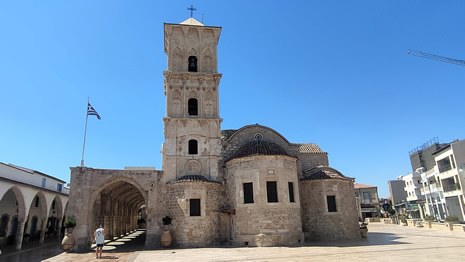 |
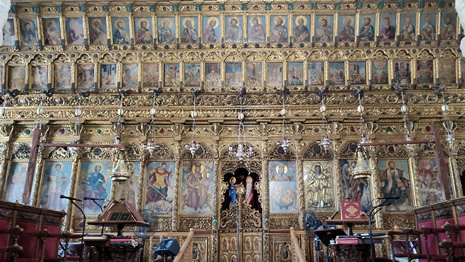 |
|
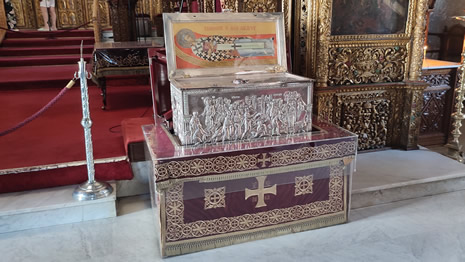 |
 |
Just a short walk from the church and along the Finikoudes promenade, stands the Larnaca Fortress (shown below). Originally built in the Middle Ages and later fortified by the Ottomans, the castle has served various roles, from a defensive stronghold to a prison. Today, it houses a small museum and offers panoramic views of the Mediterranean, making it a favourite spot for history buffs and photographers alike.

The Djami Kebir Mosque, or Great Mosque (below), is a historic and active place of worship in Larnaca, Cyprus, notable for its conversion from a Catholic church following the Ottoman conquest. Located near the Larnaca Fort and the popular Finikoudes promenade, it stands as a symbol of the city's diverse cultural heritage.

To the southwest of the city, in the direction of the airport, lies Hala Sultan Tekke (shown below), one of Islam’s most revered sites. This tranquil mosque, surrounded by palm trees and gardens, is believed to be the burial place of Umm Haram, a companion of the Prophet Muhammad. Its serene ambiance draws visitors of all faiths.

Adjacent to the mosque is the Larnaca Salt Lake, a breathtaking natural wonder. In winter, the lake fills with water and becomes a sanctuary for thousands of migratory flamingos. These elegant birds arrive white and gradually turn pink as they feed on the lake’s brine shrimp, a transformation that adds a magical hue to the landscape. By summer, the lake dries up, leaving behind a shimmering crust of salt.
Link to Next Page (Page 2 of 5)
Back to Top